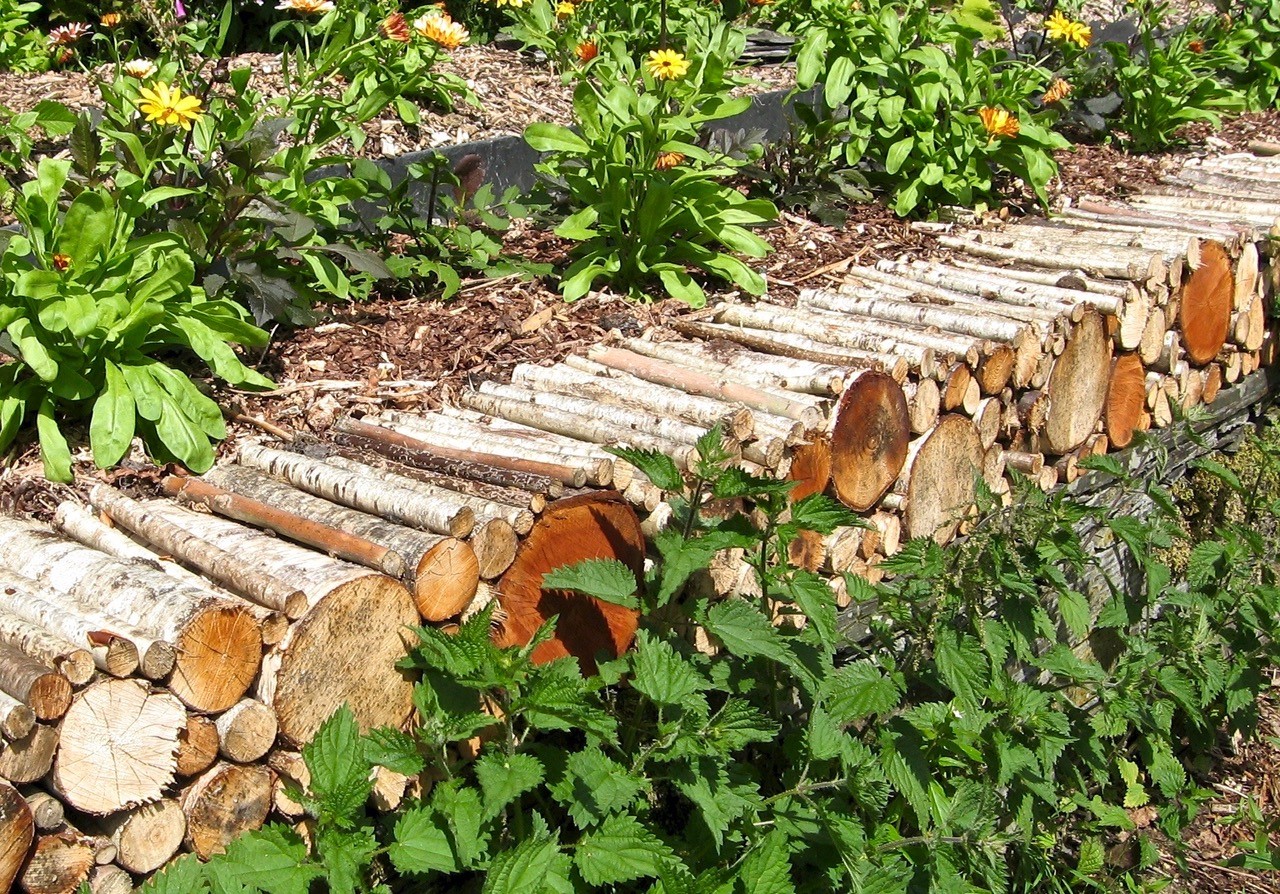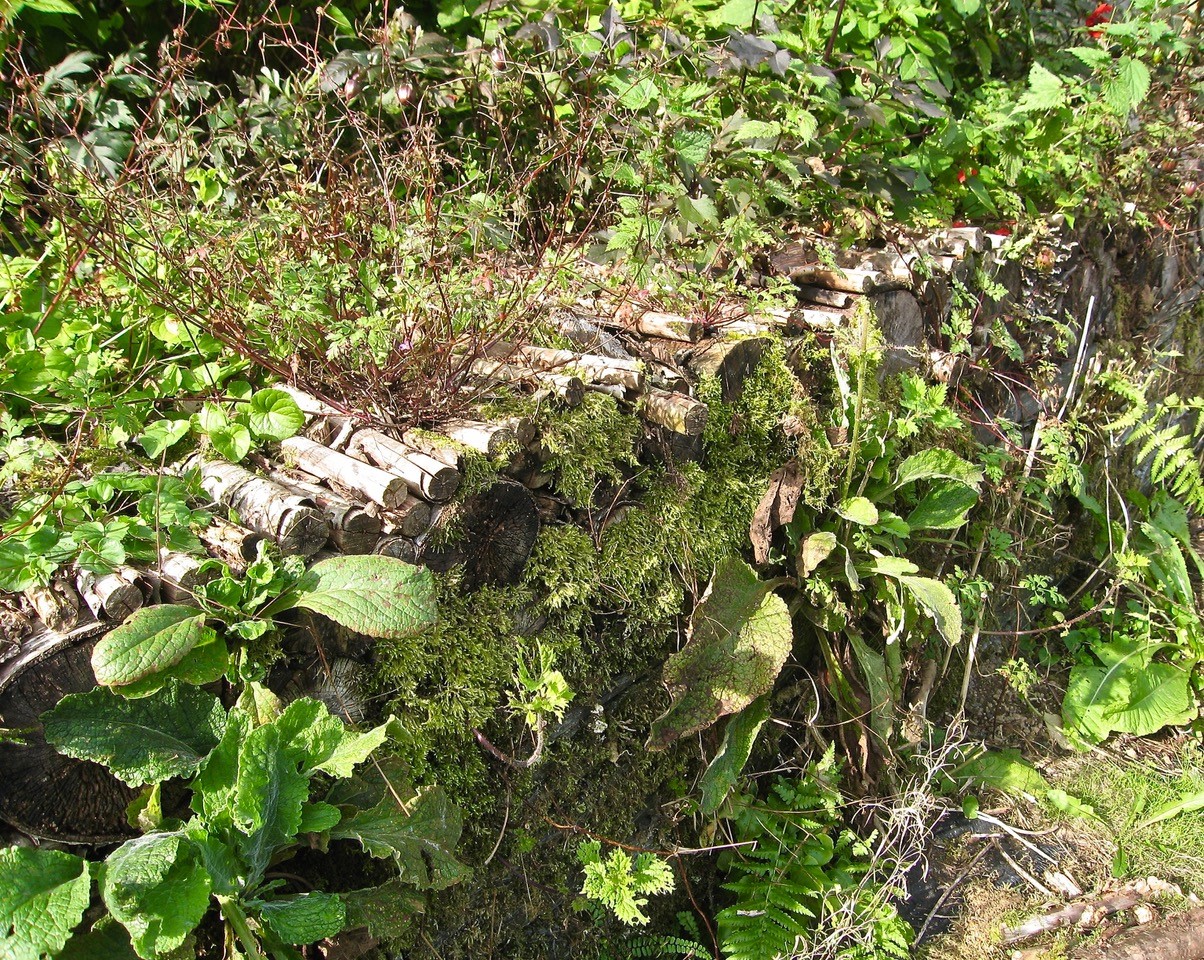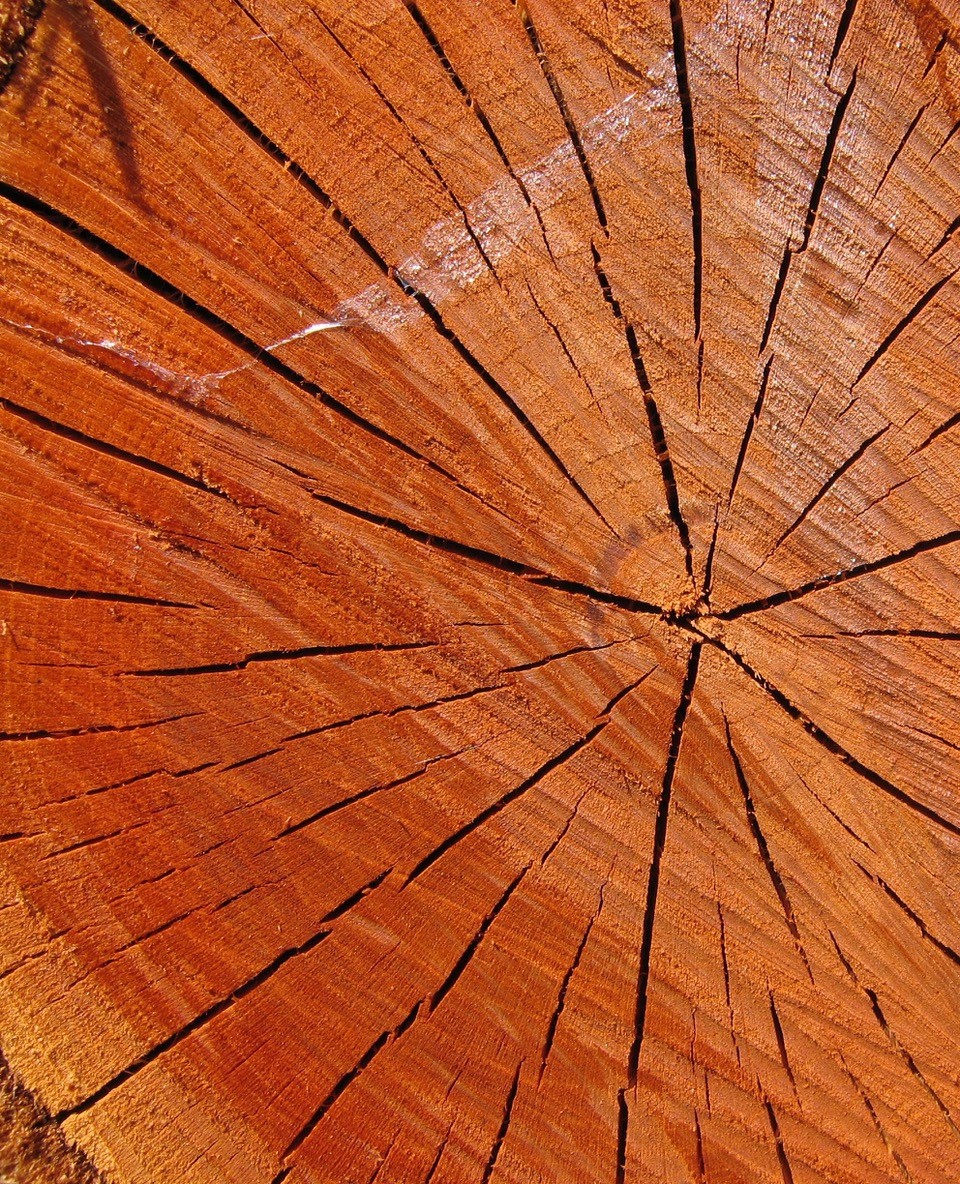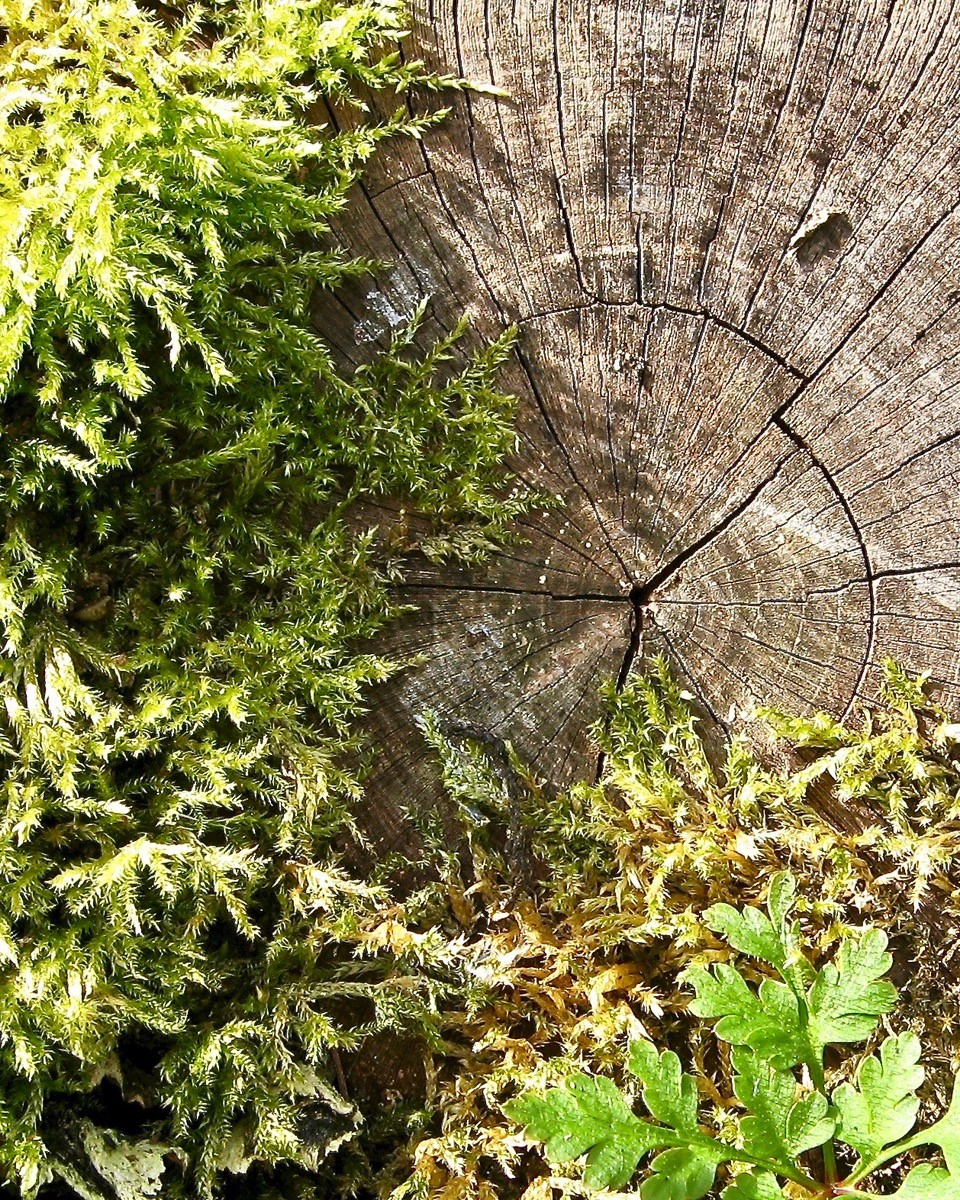Embracing the alchemy of decay will enhance the life – plant, soil, wild and human – in your garden.
It was a gamble, but it was also a back-saving, pragmatic experiment from which the wilder life in my garden and I are now reaping rich, dark rewards. Wood – as chips, mulch, paths, poles, stakes, twigs, posts, fencing – is integral to my garden’s structure, functionality and fertility. In all its forms, it meets my gardening needs, beautifully, leaving more of a gardening toeprint than a footprint.

Four years ago, I used wood, in the form of logs of ash, birch, damson, hazel and willow, to try something new: building a ‘hybrid’ soil-retaining wall in tandem with slate (read how here). It was chancy (a wall that, er, rots away?), but the end result – a kind of ‘log pile with added function and style’, as I coined it – looked stunning, and I was hooked on finding out how it would fare. Four years later, the interim results are looking good, all thanks to that quiet alchemy that we all rely on for life: decay.
Although it’s long lost its just-made freshness, my log wall, now replete with mosses, lichens and bracket fungi, is a thing of evolving beauty. Spiders, among the first tenants, spin their silky traps, some funnelling into dark crevices. Toadstools regularly bloom, mushrooming out overnight from between the logs which unseen mycelium thread among.

The once unmissable orange-brown of the damson logs is now muted by algae and moss, and aged by the sun. The cut ends of the exposed logs still dry out and crack in the sunshine, where red admirals, lizards and wolf spiders bask on them. The other ends – those buried deep in the dark and spongey woodchip-enriched undug soil of the dahlia border – couldn’t be more different. Soil life soon got to work there, as the rot set in, and a slow feast began.
All that’s now left of most of the thinner logs is their almost-still-solid woody ends on the outside of the wall. The rest of the wood has gone, or is now soft, mushy pulp that’s home to bright, dashing tiger and brandling worms, which are transforming it into their dark, nutrient-rich casts. Pale fungal mycelium, linking plant roots with the soil’s wider web of life, are sewn throughout the wall, doing their own bit in turning tough wood into soft humus.

The gaps now left between the thicker logs house millipedes, centipedes, woodlice, some slugs and snails, and ground beetles (which chomp on molluscs), and will be perfect winter hideaways for still-growing frogs, toads and newts. And that’s just a fraction of the life I can see; a microbial world is busying away beyond the human eye. It’s no wonder a flick-and-find, blackbird-led frenzy breaks out here year-round.
One mystery once the wall was built was when thinner logs started being pushed out of the wall (which took some effort, as they were held between thicker, heavier logs). I pushed them back in, and something pushed them back out again. That something was clearly trying, persistently, to burrow in among the logs from the soil side. It didn’t affect the wall’s structure, but it was a good few moons before the penny dropped: vole power. These small mammals are part of my garden’s ecosystem, and we rub along together, despite their infuriating lifestyle: burrowing around just below the surface of my no-dig soil, occasionally creating havoc when they shove out a new plant (shout if you know how I can secure no-burrow soil…).

What’s most surprising, after 16 seasons of non-stop rot, is that the wall, structurally, is pretty much intact; it hasn’t sunk or collapsed anywhere near as much as I’d imagined (I guessed I’d be levelling it up with fresh logs by now). Not even deep, soil-heaving frosts faze it. What has happened, due to the hastened decay of the thinner logs, is that it is now far less solid, with numerous underground nooks and crannies, where the thinner logs once were, especially on the soil side. Unsurprisingly, the thicker logs are taking longer to disintegrate, and are still holding it all together. In a few cases, tougher bark, especially of ash, has outpaced decay, leaving hollow cylinders brimming with wildlife. I doubt the wonder wall will manage another four years without some slumping, and expect it will need topping up. We’ll see.

While it’s fed and homed an array of wild life, the most striking in-my-face benefit of the wooden wall has been the boost it’s given to the ‘Bishop’s Children’ dahlias growing alongside (they are stay-in-all-year tubers, which I don’t lift). As well as thriving in undisturbed soil enriched with green wood chips, the plants have also been able to tap into the riches of the slowly disintegrating logs. When wood rots, it liberates the goodness stored in it, which living plants can utilise.

Throw in a multidimensional web of fungal mycorrhiza – which live in symbiosis with the dahlias’ roots – and the result is tall, vibrant and floriferous plants that enrapture bees and butterflies for months. At a practical level, the slowly crumbling logs store moisture for the adjacent plants during hot, dry spells. Together with mulch, they also help to insulate the tubers from penetrating frost.
Habitat for wildlife big and small, heaven for roots and fungi, go-slow soil enrichment, and enabler of strong, healthy, flower-packed plants – all from a transient, slowly mouldering and ever-changing wall made from wood. My ‘log pile with added function and style’ reminds me, daily, to never underestimate the life-bringing power of decay. I sure won’t be stopping the rot.
Text and images © John Walker
Find John on Twitter @earthFgardener


